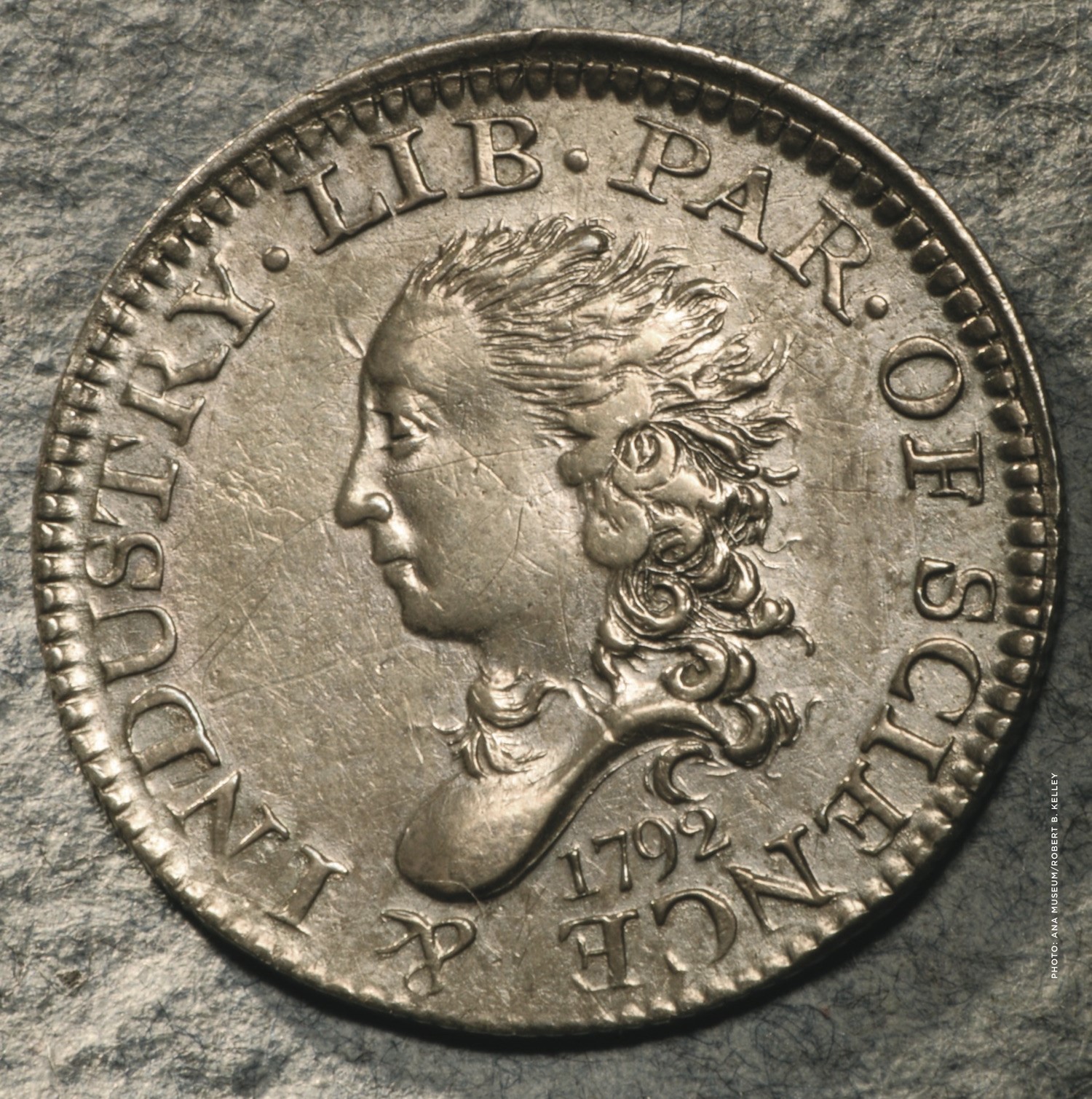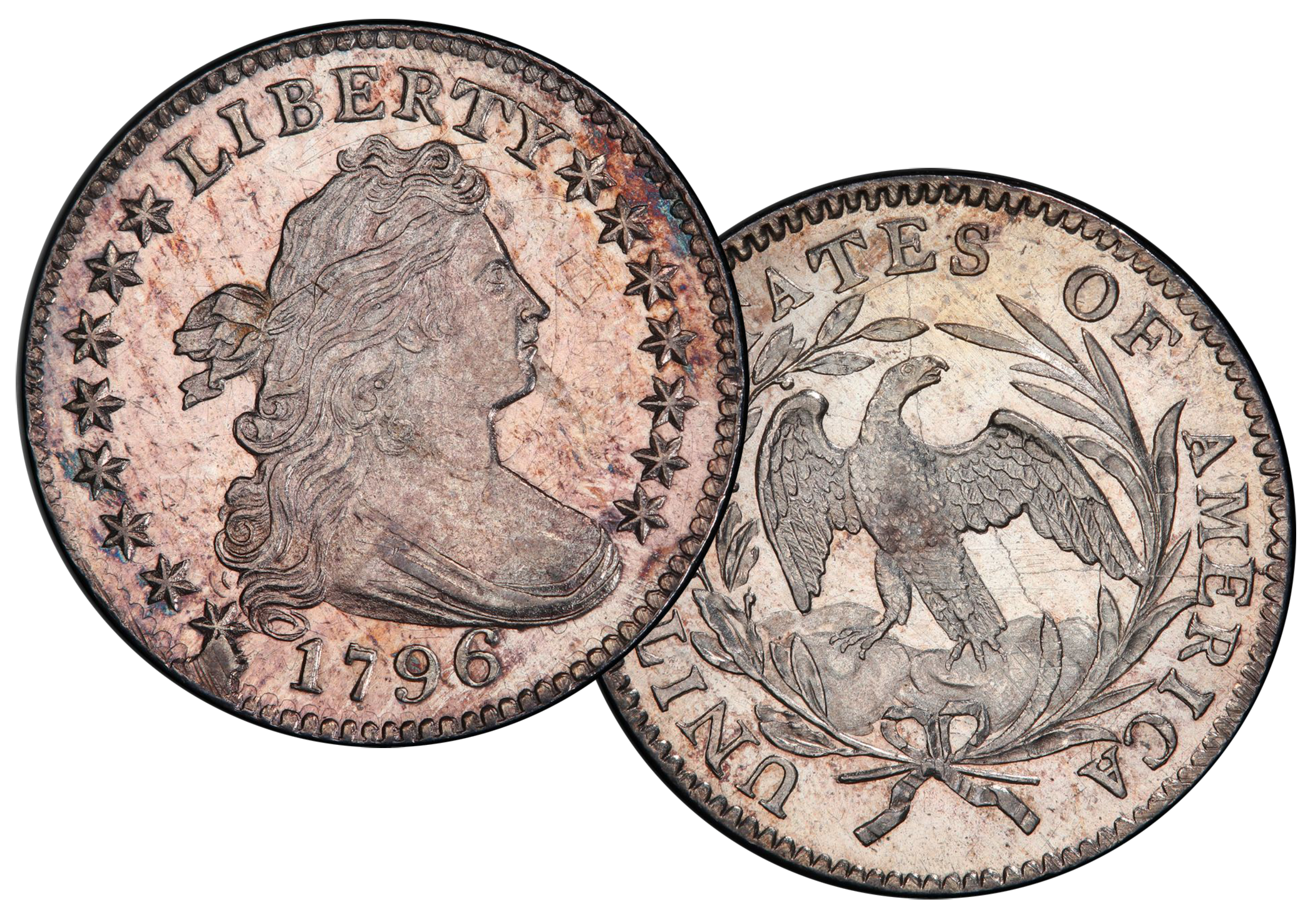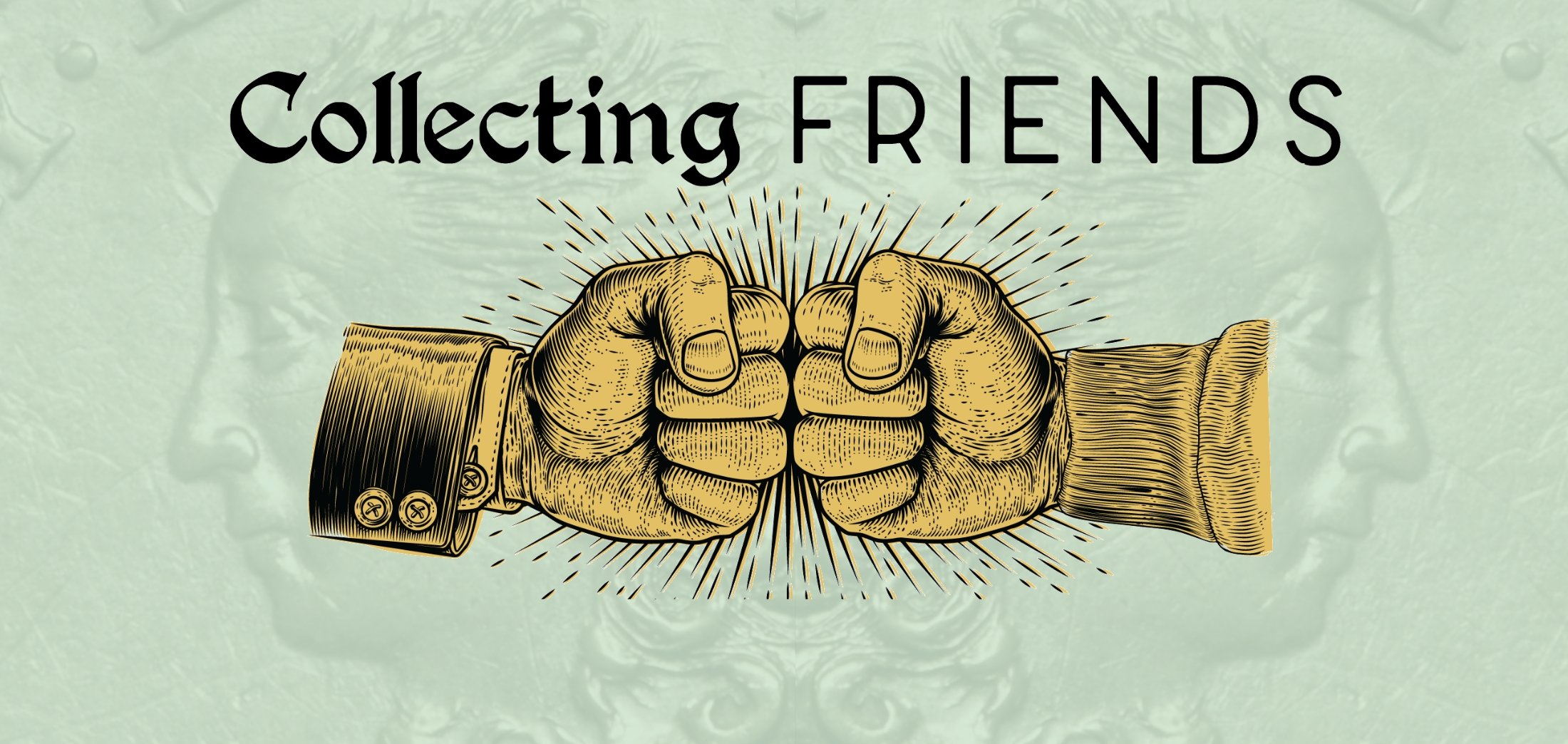Collecting Friends: Half Crazy Half Dimes
Steve: A marvelous thing about writing about coins is that you can immerse yourself in a specific area, figure out why a collector could be into it, and then share it with readers. I’ve never really been too jazzed about half dimes: just too small for my taste. But when Coin World’s Managing Editor William T. Gibbs suggested the little, long-discontinued denomination as one that would be a good cover feature for the November monthly issue, who was I to disagree with Bill?
The 1792 Bust half disme starts the series, along with the entertaining, unsupported stories of the issue being struck from Martha Washington’s silverware, or even that the portrait of Liberty is in the guise of Martha Washington. The denomination concluded in 1873 and the series made headlines earlier this year when the unique 1870-S Seated Liberty half dime sold for $3,120,000 at Heritage’s January Florida United Numismatists auction. History, the rare coin market, and lots of types and varieties in between makes for a solid feature.

A feature article needs an organizing theme and it made sense to look at the denomination chronologically, imagining the reader as a collector being introduced to different types, but with an issue or two within each that might cause them to look deeper in a series. The Flowing Hair type of 1794 and 1795 was followed by the Draped Bust, Small Eagle half dimes of 1796 and 1797. The Red Book includes two varieties of 1796 half dimes: the 1796 LIKERTY which is the result of a broken B letter on the obverse, and the 1796/5 overdate. When Heritage offered a nice example of the former, the cataloger said that there were two listed varieties, “leaving the ‘plain’ 1796 entry sandwiched between the two an enigma.”
.png?width=1080&height=532&name=1795%20half%20dime%20(1).png)
I go to the “Red Book” as my first source on types, mintages and major varieties, but noticed that there wasn’t a “regular” 1796 half dime listed. So, I asked Dennis. He shared that the Red Book team deleted the “regular 1796” line item in the 77th (2024) edition, reasoning that there are only two die varieties for that date—namely, the “6 Over 5” and the “LIKERTY”—so a third, “normal,” coin doesn’t exist.
The confusion is that third party grading services don’t always identify the variety, showing in population reports a “regular” 1796 half dime. It’s a coin that sits at this odd intersection of being a type coin, but also being a variety at the same time.
Dennis, I imagine you have to make these types of decisions all of the time as the publisher at Whitman and think about how they will influence collectors.
Dennis: It’s a team effort! I don’t think even R.S. Yeoman himself ever made a change in the Red Book without running it past the rest of the book’s editorial panel first. But yes, we’re constantly reviewing and analyzing the content of the book and looking for ways to make it easier to understand, more accessible, more convenient, and a more valuable resource.
I remember our editorial conversations about the 1796 half dime. They started in May of 2022. I’d been working on the half dimes section of Mega Red, 8th edition, which was slated to cover all the “odd” denominations not yet featured in the book—two-cent pieces, copper-nickel three-cent pieces and silver trimes, half dimes, twenty-cent pieces, and the like. That’s when I noticed the strangeness around our Red Book coverage of the 1796 half dime. I queried Jeff Garrett, senior editor of the Red Book, and he double-checked Logan and McCloskey to confirm that there are only two varieties (the 6 Over 5, and the LIKERTY). With that confirmation from Jeff, I wrote to Editor Emeritus Kenneth Bressett. I suggested to Ken that we delete the chart row for the “Normal” coin, and keep only the two varieties. Ken replied, “Yes, I would agree that the listings should be changed. Some confusion has occurred because the defective letter B is less obvious on the second obverse die, and in the past some coins have been described that way as a difference because LIKERTY is a catchy nickname.”
Jeff affirmed that “Part of the confusion is that NGC and PCGS sometimes send coins back labeled as 1796 only, without the proper attribution. Maybe we should leave the 1796 with a footnote explaining this?”
The solution we landed on was to delete the “Normal” listing and explain the situation in a chart note, which will appear in the 2025 edition (published in 2024).
The Red Book reports on how collectors collect—not just through the pricing, which changes every year, but also through editorial changes like the one described above. In this way the Red Book is a record of language, customs, research, and trends in the hobby community.
Another recent example: In January of 2022 I emailed President John Frost and other officers of the Barber Coin Collectors Society with this query:
Ken Bressett, Jeff Garrett, and I were talking recently, and I remarked that I’ve never heard a collector or dealer casually refer to a Barber dime, quarter, or half dollar as a “Liberty Head.”
And yet, in the Red Book we religiously categorize these as BARBER OR LIBERTY HEAD dimes, quarters, and half dollars. So for half dollars, we have the subhead of BARBER OR LIBERTY HEAD (1892–1915).
This wording goes back to 1946 and the 1st edition of the Red Book. Even before that, the Blue Book, which didn’t name the coin types in subheads but did describe them in narrative text, used the “Liberty Head” wording. (It also gave a considerable amount of text explaining that the term “Morgan dime,” etc., is inaccurate. But that’s another ball of wax!)
My question is: Do you see any objection to changing “BARBER OR LIBERTY HEAD (1892–1915)” to simply “BARBER (1892–1915)” (and similar for the dimes and quarters)?
To a non-editor this kind of thing might seem like the age-old question, “How many angels can dance on the head of a pin?” But we take it all seriously, and, as your question about the 1796 half dime shows, it’s all about clarity, precision, and good communication.

Be on the lookout for another installment of Collecting Friends next month or subscribe here and never miss a post! In the meantime, explore beautiful coins from the ANA's Edward C. Rochette Money Museum Virtual Exhibits.
About the Collecting Friends Blog
Hello! And welcome to the ANA’s blog series, “Collecting Friends.”
We decided to approach this much like a conversation between friends. One of us starts with a topic, then the other responds. Simple as that. Along those lines, we’ll keep the tone conversational as much as possible.
We both write about coins professionally, and will keep our relative style guides in our writing. For Dennis, Publisher at Whitman Publishing, that means capitalizing “Proof” and italicizing Red Book and never saying anything bad about Ken Bressett, who’s awesome anyway.
For Steve, who’s written with Coin World for 15 years, it means Winged Liberty Head dime instead of “Mercury” dime, and similar nuances and oddities. And, it means writing A Guide Book of United States Coins (better known as the “Red Book”).
Both of us started collecting when we were little, introduced to coins by a chance encounter with an old coin that sparked our curiosity. One of Steve’s interests is coin valuation, and he gravitates towards the intersection of art and coins. Dennis enjoys medals and world coins, and studying modern U.S. coins in the context of older series, what came before.
We met in 2012 at the American Numismatic Association World’s Fair of Money in Philadelphia at an event hosted by the Austrian Mint where there was both a Ben Franklin and a Betsy Ross impersonator. We’ve become great friends in the past decade. We even were appointed together to sit on the Citizens Coinage Advisory Committee starting in 2016, but Steve resigned soon after he was appointed to accept a full-time job at the Treasury Department while Dennis was re-appointed in 2020.
We taught a course together on numismatic publishing and writing a few years ago at the Summer Seminar, and while life has gotten in the way of us teaching another class, we jumped at our friend Caleb’s suggestion that we write a column. We hope you enjoy it!
.png?width=300&height=300&name=steve%20roach%20circle%20frame%20(2).png)
.png?width=300&height=300&name=dennis%20tucker%20circle%20frame%20(2).png)
About the American Numismatic Association
The American Numismatic Association is a nonprofit organization dedicated to educating and encouraging people to study and collect coins and related items. The Association serves collectors, the general public, and academic communities with an interest in numismatics.
The ANA helps all people discover and explore the world of money through its vast array of educational programs including its museum, library, publications, conventions and numismatic seminars.

